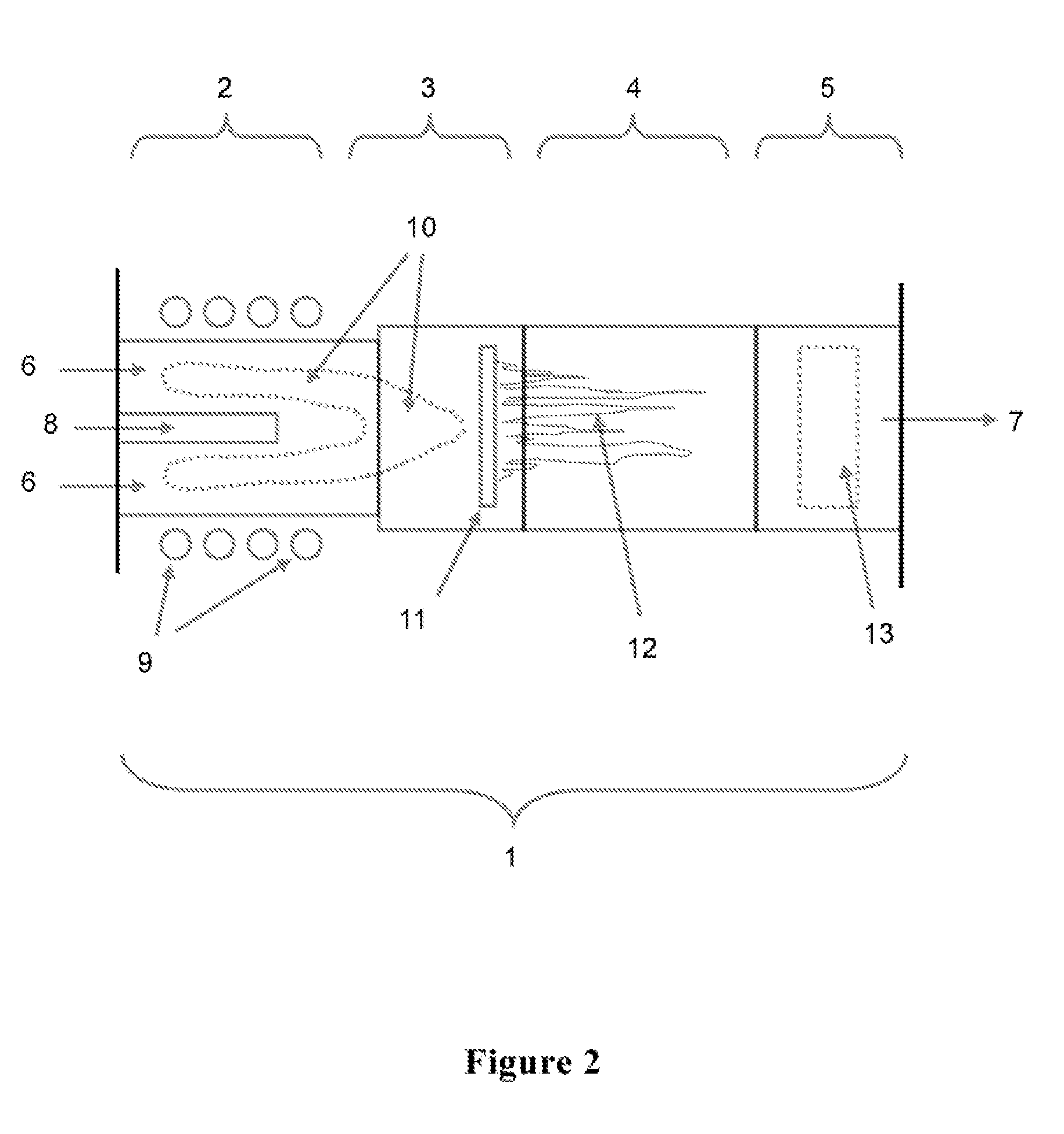Induction-coupled plasma synthesis of boron nitride nanotubes
a boron nitride nanotube and induction-coupled plasma technology, which is applied in the direction of indirect heat exchangers, chemical/physical/physicochemical processes, lighting and heating apparatus, etc., can solve the problems of less flexibility of htp-grown tubes, shortcoming of current htp implementation, and small aspect ratio of cvd grown tubes, etc., to achieve significant yield, low cost, and high production rate
- Summary
- Abstract
- Description
- Claims
- Application Information
AI Technical Summary
Benefits of technology
Problems solved by technology
Method used
Image
Examples
Embodiment Construction
[0015]In accordance with the principles described herein, high quality BNNTs may be synthesized in large, commercially-viable quantities, using ICP. Some embodiments produce commercially-viable and high quality products without the use of catalysts or intermediary species. Embodiments of the processes disclosed herein employ an elevated pressure to drive the BNNT synthesis. Some embodiments use a condenser or other source of asperities to trigger BNNT formation. Some embodiments use natural nucleation of boron droplets (i.e. not induced by forced local cooling).
[0016]ICP-based BNNT synthesis may be performed at elevated pressure, such as between 2 atmospheres and 250 atmospheres, and for example, between 2 atmospheres and 12 atmospheres, and as a further example, at about 12 atmospheres. As described in U.S. Pat. No. 8,206,674 B2 to Smith et al., the contents of which are incorporated by reference in their entirety, BNNT synthesis may be performed at elevated pressures, including fo...
PUM
| Property | Measurement | Unit |
|---|---|---|
| pressure | aaaaa | aaaaa |
| pressure | aaaaa | aaaaa |
| diameter | aaaaa | aaaaa |
Abstract
Description
Claims
Application Information
 Login to View More
Login to View More - R&D
- Intellectual Property
- Life Sciences
- Materials
- Tech Scout
- Unparalleled Data Quality
- Higher Quality Content
- 60% Fewer Hallucinations
Browse by: Latest US Patents, China's latest patents, Technical Efficacy Thesaurus, Application Domain, Technology Topic, Popular Technical Reports.
© 2025 PatSnap. All rights reserved.Legal|Privacy policy|Modern Slavery Act Transparency Statement|Sitemap|About US| Contact US: help@patsnap.com



